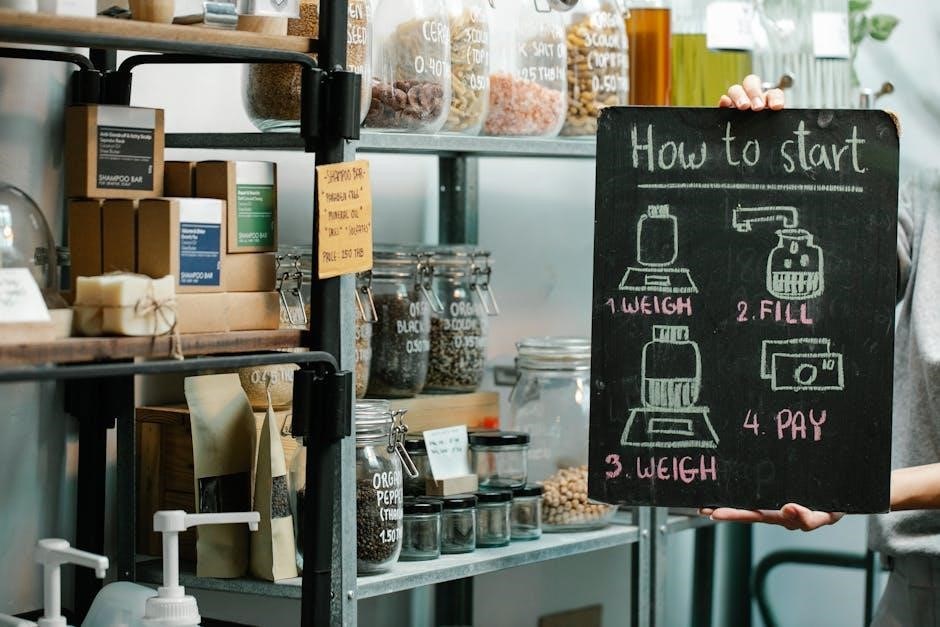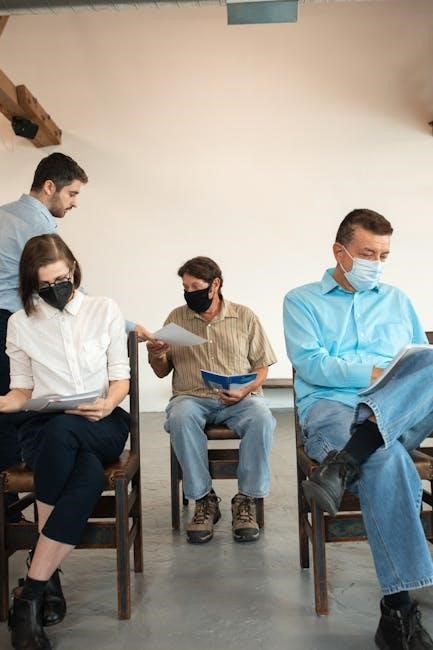EQUIA Forte is a glass hybrid restorative system designed for dental professionals. It combines EQUIA Forte Fil and EQUIA Forte Coat for durable, aesthetic restorations. This guide provides step-by-step instructions for proper use, ensuring optimal results and patient satisfaction.
1.1 Overview of EQUIA Forte System
The EQUIA Forte System is an advanced glass hybrid restorative solution designed for dental professionals, comprising EQUIA Forte Fil and EQUIA Forte Coat. It offers enhanced features such as increased translucency, fluoride release, and improved compressive strength compared to its predecessors. Suitable for Class I and stress-bearing Class II restorations, the system provides durable and aesthetic results. The Push and Mix activation simplifies application, with specific working and setting times ensuring efficient dental procedures. This system is ideal for various dental restoration needs, offering both functionality and ease of use.
1.2 Importance of Following Instructions
Adhering to the EQUIA Forte instructions is crucial for achieving optimal results. Proper mixing, application, and finishing techniques ensure the material’s performance and longevity. Deviations may lead to compromised restorations, affecting both aesthetics and durability. Dental professionals must carefully follow the guidelines to maximize the system’s benefits, including fluoride release and mechanical strength. Correct usage also minimizes potential issues like sensitivity or discoloration, ensuring patient satisfaction and successful outcomes. Compliance with instructions is essential for the system’s intended performance and patient care.
Preparatory Steps
Patient and cavity preparation are essential before using EQUIA Forte. Treat non-bur cut enamel with 35-40% phosphoric acid, rinse, and dry. Ensure proper cavity preparation guidelines are followed.
2.1 Patient Preparation
Patient preparation involves ensuring the individual is comfortable and informed. Explain the procedure, address any allergies, and ensure proper isolation of the treatment area. Non-bur cut enamel should be treated with 35-40% phosphoric acid, followed by rinsing and drying with oil-free air. Avoid desiccating the tooth. This step ensures a clean, prepared surface for the restorative material, promoting optimal adhesion and longevity of the restoration. Proper patient preparation is critical for the success of the EQUIA Forte application.
2.2 Cavity Preparation Guidelines
Cavity preparation for EQUIA Forte involves minimal mechanical retention, as extensive preparation is unnecessary. Use a sectional matrix system for Class II restorations to ensure proper contouring and contact points. Roughen the surface with superfine diamond burs before applying EQUIA Forte Coat. Ensure proper isolation to prevent moisture contamination. Non-bur cut enamel should be treated with 35-40% phosphoric acid, rinsed, and dried with oil-free air. This preparation ensures a clean, properly shaped cavity for optimal material adhesion and restoration longevity.
Mixing Process
Mix EQUIA Forte using the Push and Mix activation for 10 seconds. Dispense within 10 seconds, then work for 1 minute and 15 seconds. Ensure proper setting.
3.1 Step-by-Step Mixing Instructions
Start by inserting the EQUIA Forte capsule into the applier. Click twice to prime the capsule, ensuring proper activation. Depress the plunger firmly for 2 seconds to mix the components. Mix for exactly 10 seconds, then dispense immediately. The working time is 1 minute and 15 seconds after mixing. Ensure gloves are worn and the area is clean to prevent contamination. Follow these steps precisely for optimal material performance and bonding with the tooth structure. Proper mixing is critical for achieving the desired restorative outcomes.
3.2 Working and Setting Times
The working time for EQUIA Forte is 1 minute and 15 seconds after mixing. The net setting time is 2 minutes, allowing sufficient time for placement and contouring. Final finishing can commence 2 minutes and 30 seconds after mixing. Proper timing ensures optimal material properties and durability. Avoid interruptions during this period to maintain the integrity of the restoration. Use a timer to track the setting process accurately for the best results. Adherence to these times is crucial for achieving a successful and long-lasting restoration.

Application and Coating
Apply EQUIA Forte Fil restorative material directly into the prepared cavity, contouring as needed. Finish by brushing a single layer of EQUIA Forte Coat for a polished surface.
4.1 Restorative Material Placement
After proper preparation, EQUIA Forte Fil is placed into the cavity using the capsule or syringe. Ensure complete adaptation to cavity walls for a tight seal. Contour the material to match the tooth’s natural shape, using suitable dental instruments. Avoid overfilling to prevent excess material removal later. Proper placement ensures durability and aesthetics, adhering to the system’s guidelines for optimal results.
4.2 Final Coating Application
Apply a thin layer of EQUIA Forte Coat to the restored surface using a brush. Ensure complete coverage for optimal sealing and durability. Prior to coating, roughen the surface with superfine diamond burs to enhance adhesion. Gently blot excess moisture with a cotton pellet or dry with oil-free air, avoiding desiccation. Allow the coating to set according to the recommended timeline before proceeding with final finishing. This step ensures a polished, long-lasting restoration that maintains both function and aesthetics.

Finishing and Polishing
Finish under water spray using superfine diamond burs after 2 minutes 30 seconds from mixing. Polish with aluminum oxide impregnated polishing points for a high shine.
5.1 Tools and Techniques for Finishing
For optimal finishing, use superfine diamond burs under water spray to shape and refine the restoration. Start finishing 2 minutes and 30 seconds after mixing; Polish using aluminum oxide impregnated polishing points to achieve a high luster. Ensure all sharp edges are smoothed for patient comfort. Avoid excessive pressure to prevent damage. Proper finishing enhances aesthetics and longevity, ensuring a natural-looking restoration that blends seamlessly with surrounding teeth. This step is critical for both functionality and patient satisfaction.
5.2 Polishing for Optimal Results
Polishing is essential for achieving a smooth, high-luster finish. Use aluminum oxide impregnated polishing points in increasing grits to refine the surface. Start with coarse grits for shaping and progress to fine grits for final polishing. Ensure the restoration is fully set before polishing to avoid damage. Light pressure and water spray help maintain surface integrity. Proper polishing enhances aesthetics, reduces wear, and ensures patient comfort. This step is crucial for achieving a natural, long-lasting restoration that meets clinical and aesthetic standards.

Post-Procedure Care
After restoration, avoid desiccation and ensure the surface is clean. No bonding agent is needed due to chemical adhesion. Final coating application completes the process.
6.1 Patient Instructions Post-Treatment
Patients should avoid chewing or biting on the restoration for at least 30 minutes. Advise them to maintain good oral hygiene and attend follow-up appointments. No special care is needed beyond normal dental hygiene practices. Inform patients to avoid desiccation and ensure the restoration remains moist. Emphasize the importance of avoiding hard or sticky foods initially. Provide clear instructions to prevent damage and ensure the longevity of the restoration.
6.2 Follow-Up Recommendations
Schedule a follow-up appointment within 2-4 weeks to assess restoration integrity. Monitor for signs of wear, cracks, or discoloration. Advise patients to maintain regular dental check-ups for long-term evaluation. Ensure proper oral hygiene practices are reinforced. Recommend routine cleanings to prevent complications; Address any patient concerns promptly to ensure satisfaction and restoration longevity. Follow-up care is crucial for maintaining the health and durability of the restoration.

Troubleshooting Common Issues
Address material sensitivity by ensuring proper handling. Discoloration can be resolved with polishing techniques. Refer to specific sections for detailed solutions.
7.1 Handling Material Sensitivity
Material sensitivity with EQUIA Forte can occur due to improper handling. Ensure proper mixing times and avoid contamination. Use recommended instruments to minimize irritation. Always follow manufacturer guidelines for application and setting times to reduce sensitivity risks. Proper handling ensures optimal results and patient comfort.
7.2 Addressing Restoration Discoloration
Discoloration of EQUIA Forte restorations can occur due to improper finishing or contamination. To address this, ensure the surface is clean and dry before applying the final coat. Use superfine diamond burs for polishing to achieve a high gloss finish. If discoloration persists, inspect the restoration for uneven layers or improper curing. Follow the manufacturer’s instructions for coating and finishing to maintain the aesthetic and functional integrity of the restoration.
